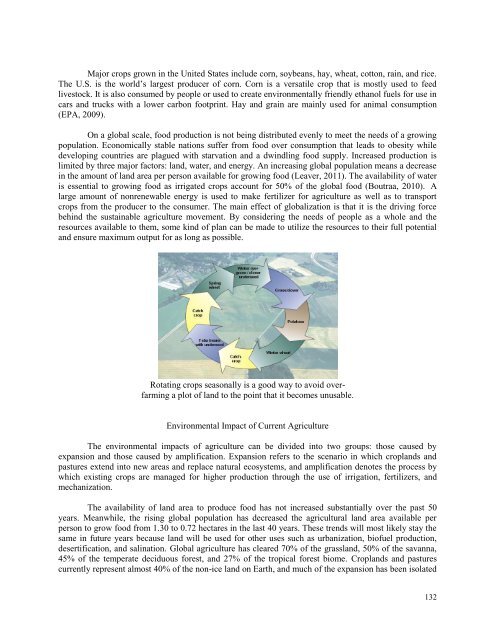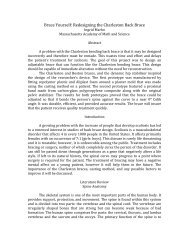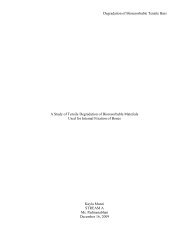Got Food? - the Scientia Review
Got Food? - the Scientia Review
Got Food? - the Scientia Review
You also want an ePaper? Increase the reach of your titles
YUMPU automatically turns print PDFs into web optimized ePapers that Google loves.
Major crops grown in <strong>the</strong> United States include corn, soybeans, hay, wheat, cotton, rain, and rice.<br />
The U.S. is <strong>the</strong> world‘s largest producer of corn. Corn is a versatile crop that is mostly used to feed<br />
livestock. It is also consumed by people or used to create environmentally friendly ethanol fuels for use in<br />
cars and trucks with a lower carbon footprint. Hay and grain are mainly used for animal consumption<br />
(EPA, 2009).<br />
On a global scale, food production is not being distributed evenly to meet <strong>the</strong> needs of a growing<br />
population. Economically stable nations suffer from food over consumption that leads to obesity while<br />
developing countries are plagued with starvation and a dwindling food supply. Increased production is<br />
limited by three major factors: land, water, and energy. An increasing global population means a decrease<br />
in <strong>the</strong> amount of land area per person available for growing food (Leaver, 2011). The availability of water<br />
is essential to growing food as irrigated crops account for 50% of <strong>the</strong> global food (Boutraa, 2010). A<br />
large amount of nonrenewable energy is used to make fertilizer for agriculture as well as to transport<br />
crops from <strong>the</strong> producer to <strong>the</strong> consumer. The main effect of globalization is that it is <strong>the</strong> driving force<br />
behind <strong>the</strong> sustainable agriculture movement. By considering <strong>the</strong> needs of people as a whole and <strong>the</strong><br />
resources available to <strong>the</strong>m, some kind of plan can be made to utilize <strong>the</strong> resources to <strong>the</strong>ir full potential<br />
and ensure maximum output for as long as possible.<br />
Rotating crops seasonally is a good way to avoid overfarming<br />
a plot of land to <strong>the</strong> point that it becomes unusable.<br />
Environmental Impact of Current Agriculture<br />
The environmental impacts of agriculture can be divided into two groups: those caused by<br />
expansion and those caused by amplification. Expansion refers to <strong>the</strong> scenario in which croplands and<br />
pastures extend into new areas and replace natural ecosystems, and amplification denotes <strong>the</strong> process by<br />
which existing crops are managed for higher production through <strong>the</strong> use of irrigation, fertilizers, and<br />
mechanization.<br />
The availability of land area to produce food has not increased substantially over <strong>the</strong> past 50<br />
years. Meanwhile, <strong>the</strong> rising global population has decreased <strong>the</strong> agricultural land area available per<br />
person to grow food from 1.30 to 0.72 hectares in <strong>the</strong> last 40 years. These trends will most likely stay <strong>the</strong><br />
same in future years because land will be used for o<strong>the</strong>r uses such as urbanization, biofuel production,<br />
desertification, and salination. Global agriculture has cleared 70% of <strong>the</strong> grassland, 50% of <strong>the</strong> savanna,<br />
45% of <strong>the</strong> temperate deciduous forest, and 27% of <strong>the</strong> tropical forest biome. Croplands and pastures<br />
currently represent almost 40% of <strong>the</strong> non-ice land on Earth, and much of <strong>the</strong> expansion has been isolated<br />
132
















